What Is an Appchain?
An appchain, short for “application-specific blockchain,” is a tailored solution specifically designed to meet unique task requirements of a decentralized application or web3 protocol.
Key Takeaways
-
An appchain is a specialized blockchain for a specific task. It's more efficient and less congested than general chains.
-
Appchains work on top of Layer 1 blockchains like Ethereum. They can also work independently.
-
Appchains can be in the form of Layer 1, Layer 2, Layer 3 and sidechains. What differentiates them is their focus on specific tasks and how they are built for efficiency around those tasks.
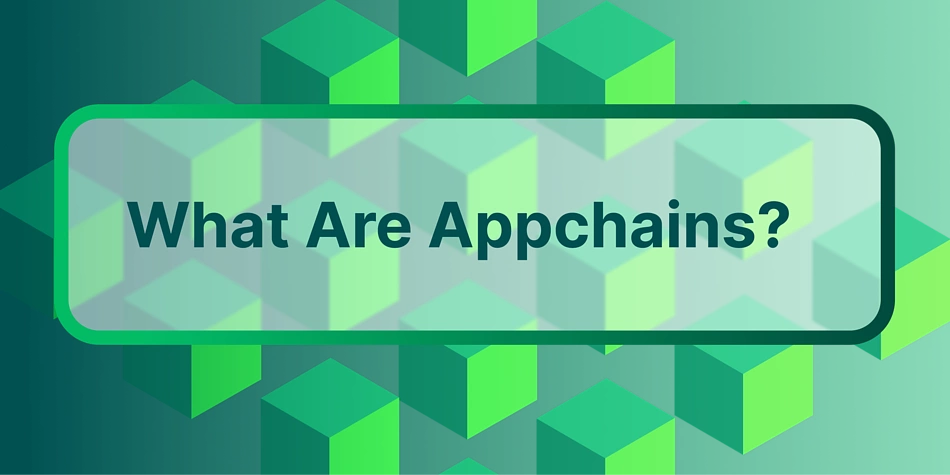
Bitcoin's initial concept paved the way, but Ethereum aspired to be more — a universal platform for everything in DeFi and tokenization. However, this ambition hit a roadblock when the 2017 surge in usage led to soaring transaction fees, making it clear that Ethereum's capacity was inadequate for such high demand.
This limitation sparked the creation of numerous Layer 1 blockchains termed "Ethereum-killers" like Solana, aiming to outdo Ethereum by offering faster transaction times and confirmations while still being multipurpose. But here lies the problem; the proliferation of these platforms often end up adding to the existing chaos of fragmented blockchain ecosystems.
This brings us to the rise of appchains, which address the fundamental issue of future-proofing in a rapidly changing crypto landscape.
In this article, we will explore what appchains are, how they work and how they are different from other blockchain solutions.
Understanding Appchains
General-purpose chains, limited by their broad focus, cannot adapt quickly enough in this disruptive space. Appchains, however, offer a nimble and targeted approach, built precisely for the needs of the protocol they are built for.
Appchains are a clever way to make use of the enormity and familiarity of legacy systems while being flexible and sovereign enough to incorporate cutting-edge technologies.
Unlike multi-purpose blockchains that strive to be a one-size-fits-all solution, appchains can be finely tuned to the specific performance, security, and governance needs of an application.This specialization allows for more efficient processing, reduced congestion and lower transaction costs, making appchains an ideal choice for applications requiring high throughput, security, or unique functionality.
By focusing on a specific application or set of use cases, appchains can evolve and scale in a way that is both sustainable and future-ready, catering to the ever-changing landscape of blockchain technology and its applications.
How Do Appchains Work?
Working of appchains can get quite technical quickly. For the scope of this article, we will simplify the explanation.
Functionality
Appchains are essentially unique environments that are fine-tuned to the application they serve. Such specialization enables them to optimize every aspect – from transaction processing to security protocols – specifically for that one application. This involves a customized approach to handling transactions, smart contract execution, and overall network governance.
Unlike traditional blockchains that must balance the needs of diverse applications, appchains can prioritize efficiency and performance for their specific use case.
The Backbone of Appchains
Appchains typically operate atop of existing Layer 1 (L1) blockchains, such as Ethereum. However, in the case of Layer 1 appchains, they maintain a degree of independence, often through a connection to a Layer 0 protocol like Cosmos. This Layer 0 acts as a foundational network, offering interoperability and basic infrastructure, enabling various Layer 1 appchains to coexist and communicate within a larger ecosystem.
Take the example of Immutable. Immutable zkEVM is a layer 2 scaling solution for Ethereum focusing entirely on powering blockchain-based games, i.e., an appchain on Ethereum for gaming. Ethereum, on its own, does not support fast-paced gameplay due to low throughput. So, Immutable’s gaming-focused appchain helps gaming studios deploy games in the Ethereum ecosystem without the inherent limitations.
Benefits of Appchains: What Problems Do They Solve?
Appchains are purpose-built blockchains that attempt to solve niche problems. Commonly, the benefits appchains offer are:
-
Modularity
-
Scalability
-
Interoperability
Remember that these benefits do not apply to all appchains across the board. A developer could technically spin up an appchain that is purpose-built to disallow interoperability.
Modularity
Modularity refers to the appchains design/architecture.
General-purpose blockchains, like Ethereum, have a monolithic architecture. This means they tend to have rigid rules and standards, which inhibits the ability to make changes rapidly without affecting the entire network.
The modular architecture of appchains grants developers complete control over the blockchain’s mechanics — from tokenomics to consensus mechanisms. Developers can tweak each layer as per the dApp’s requirements.
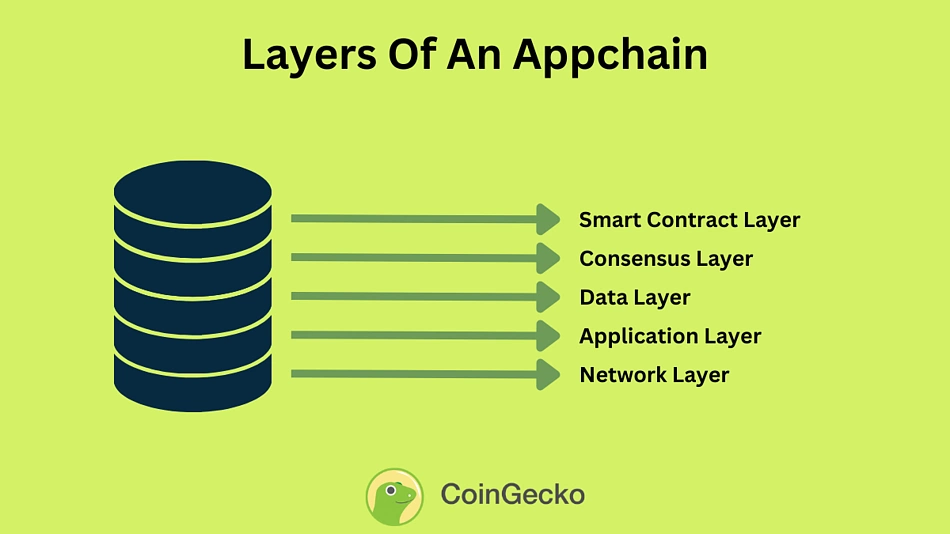
For a full-fledged appchain, the 5 layers are:
-
Network layer: The foundational layer that manages peer-to-peer networking, allowing nodes to communicate, share data, and validate transactions.
-
Application layer: Hosts the actual applications that run on the blockchain, providing the necessary interfaces for developers to create and manage dapps.
-
Data layer: Responsible for the organization and storage of all data, including the state of the blockchain, transaction details, and smart contract data.
-
Consensus layer: Implements the consensus algorithm of the appchain, which could be any variant like Proof of Work, Proof of Stake, etc.
-
Smart contract layer: automates, verifies, and enforces the negotiation or performance of a contract.
Appchains offer a modular approach to scaling, as the application and data layers are decoupled from the security layer, enabling optimization while drawing on battle-tested Layer 1s or Layer 0s for security, rather than launching new chains.
Scalability
Appchains are essentially blockchains that dedicated resources to a singular task or function. This makes them incredibly scalable (fast and low cost) for the purpose they are built. A key contributor to scalability in appchains is the presence of a separate or dedicated mempool. This is clearly elucidated by dYdX's recent migration to the Cosmos ecosystem.
dYdX is a popular decentralized exchange for perpetuals trading. When the dApp first launched, the team was forced to adopt a hybrid model where smart contracts held user funds but the order book management was on centralized servers. This limitation was due to scalability issues because the DEX had to process over 1,000 orders every second and, at the time, the team did not find the right infrastructure solution.
Recently, with dYdX V4, the DEX migrated to the Cosmos ecosystem and launched the dYdX chain, an appchain for dYdX dApp. This allowed the dYdX to attain complete decentralization while retaining high scalability.
Interoperability
A large portion of the blockchain ecosystem is siloed. Each blockchain, like Bitcoin and Ethereum, is a walled garden for users. A user on Ethereum may not be able to reap the benefits of Solana or Bitcoin without going through a web of convoluted steps and bridges.
While appchains are usually independent, they are still designed with interoperability in mind, and are built for secure and fast asset transfers from one dApp to another.
ParaSwap is a DeFi aggregator appchain that enables users to seamlessly swap assets across different decentralized exchanges. This allows users to get the best swap rates without having to manually navigate through multiple DEXs or blockchain networks.
Comparative Analysis: Appchains vs. Other Blockchain Solutions
The line between appchains and other blockchain solutions is blurry. An appchain could be as elaborate as a full-fleged Layer 1 blockchain (think Theta Network) or as niche as a dApp (like Osmosis).
A blockchain can be considered an appchain if it is purpose-built for a specific use case. It must be a specialized network designed to optimize the performance and functionality of a particular set of dApps, like DEXs, games, or NFT marketplaces.
Here are some key differences between appchains and other common blockchain solutions.
|
Appchains |
Layer 1 Blockchains |
Layer 2 Blockchains |
Sidechains |
|
|
Definition |
Customized blockchains built for specific applications, can exist as Layer 1, 2, or sidechains. |
Fundamental blockchains that serve as the main network for transactions. |
Built on top of Layer 1 blockchains to improve scalability and efficiency. |
Independent blockchains that run in parallel to a main blockchain (Layer 1). |
|
Architecture |
Varies depending on whether they are Layer 1, 2, 3, or sidechains. |
Independent and self-contained networks with their own consensus mechanisms. |
Tend to rely on Layer 1 for security. |
Operate independently but are pegged to a Layer 1 blockchain. |
|
Consensus Mechanism |
Depends on the underlying layer it's built on or if it's independent. |
Have their own consensus mechanisms (e.g., PoW, PoS). |
Usually leverage the security and consensus mechanism of the underlying Layer 1 chain. |
May have different consensus mechanisms from the main chain. |
|
Scalability |
Highly scalable if designed efficiently, particularly for specific applications. |
Limited scalability due to inherent limitations like block size and time. |
High scalability due to off-chain processing capabilities. |
Varies, but generally more scalable than Layer 1. |
|
Interoperability |
Can be designed for high interoperability with various layers and chains. |
Limited, usually operates within its own ecosystem. |
High, as they are designed to work closely with Layer 1 chains. |
Can be high if designed for cross-chain compatibility. |
|
Use Cases |
Specific to the application they are designed for (e.g., gaming, trading). |
General purposes like cryptocurrency transactions, smart contracts. |
General purpose, with faster and cheaper transactions. |
Niche use cases, specific to the design of the sidechain. |
|
Examples |
Immutable zkEVM, dYdX Chain |
Bitcoin, Ethereum |
Arbitrum, Optimism, zkSync Era |
Ronin Network, Gnosis Chain |
Examples of Appchains
If you’ve been exploring the DeFi space, making transactions, interacting with smart contracts, then you have probably interacted with an appchain. Here are some examples of appchains.
Polkadot Parachains
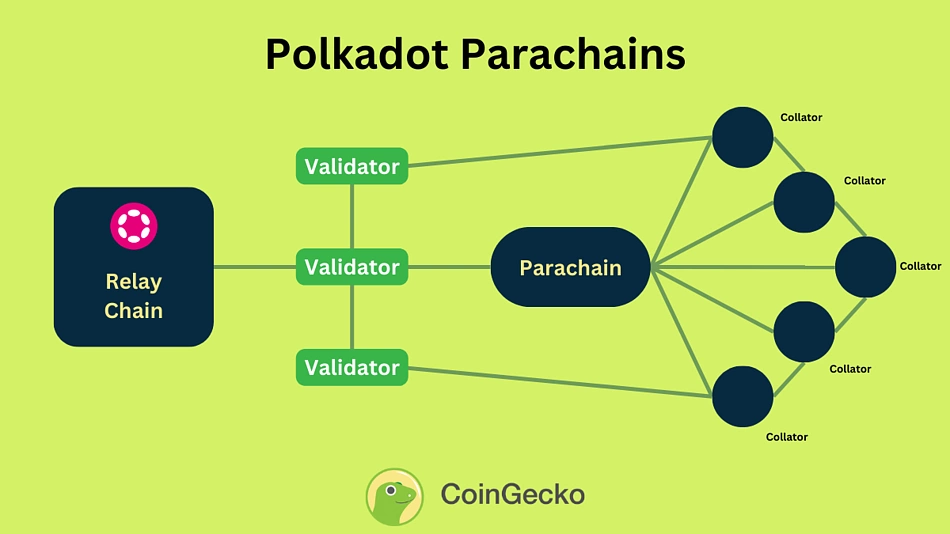
Polkadot's parachains are individual blockchains that run in parallel within the Polkadot ecosystem and are connected to Polkadot's main Relay Chain, which provides shared security and interoperability. Each parachain can have its own tokenomics, governance models, and functionality, making them highly customizable.
Cosmos Zones
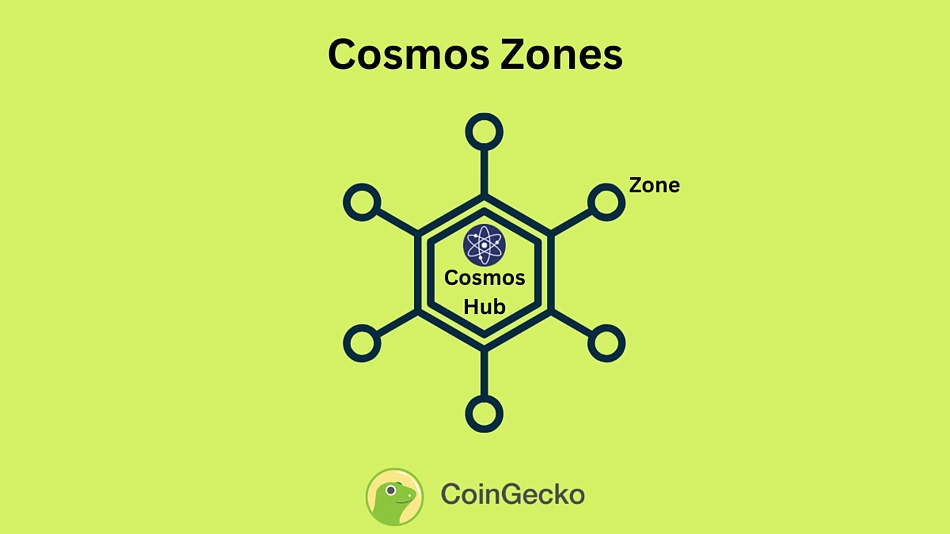
In the Cosmos network, zones are independent blockchains that connect to the Cosmos Hub, which can span a wide range of applications, from DeFi to gaming. These zones are similar to appchains in their functionality, allowing for a high degree of customization and autonomy.
They use the Inter-Blockchain Communication (IBC) protocol for interoperability, enabling them to transfer data and tokens seamlessly across the Cosmos ecosystem.
Avalanche Subnets
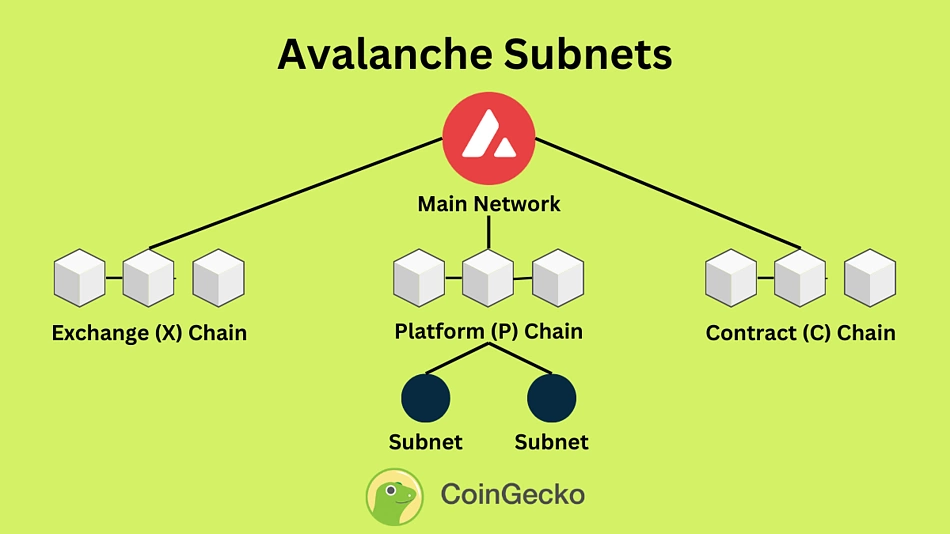
Avalanche subnets allow for the creation of custom, application-specific blockchains, where each subnet consists of a group of validators that achieve consensus on the state of a set of blockchains.
Subnets in Avalanche can have their own validator sets and can even run with different virtual machines, providing a high degree of flexibility and scalability. This design allows for bespoke blockchain rules and parameters, tailored to the needs of specific applications.
Popular Projects Built on Appchains
There are hundreds of projects built on appchains. Here are some popular projects built on appchains.
|
Project Name |
Appchain |
Project Niche |
|
Polkadot Parachain |
Decentralized Finance |
|
|
Polkadot Parachain |
Cross-Chain Finance |
|
|
Polkadot Parachain |
Data Economy |
|
|
Polkadot Parachain |
DeFi Platform |
|
|
Polkadot Parachain |
Real-world DeFi |
|
|
Cosmos Zone |
Data Oracle |
|
|
Cosmos Zone |
Liquidity Protocol |
|
|
Cosmos Zone |
DeFi Platform |
|
|
Cosmos Zone |
Privacy-focused Blockchain |
|
|
Cosmos Zone |
Decentralized Cloud Computing |
|
|
Cosmos Zone |
Trading & Derivatives |
|
|
Avalanche Subnet |
Decentralized Exchange |
|
|
Avalanche Subnet |
Decentralized Trading Platform |
|
|
Avalanche Subnet |
DeFi Yield Aggregator |
|
|
Ronin Network |
Gaming |
|
|
Ronin Network |
Decentralized Exchange |
|
|
Ronin Network |
Gaming |
|
|
Flare |
Smart Contract Platform |
Conclusion
The development of appchains marks a significant milestone in the blockchain narrative, offering tailored, efficient solutions in a disruptive industry. By focusing on specific applications and use cases, appchains help drive innovation, scalability, and sustainability. They ensure that the blockchain ecosystem remains responsive to the diverse needs of its users and developers.
As more use cases for web3, DeFi and digital assets emerge, the appchains will likely be on the forefront for developers to build. From NFT games to CBDCs, application-specific blockchain can handle it all.
This article is not meant to be taken as financial or investment advice. Always do your own research before investing in any financial products.

Sankrit is a content writer and a subject matter expert in web3. He has worked with notable companies, including Ledger, Alchemy, and MoonPay. Sankrit specializes in helping web3 brands create content that is easy to understand while accurately explaining technical concepts.



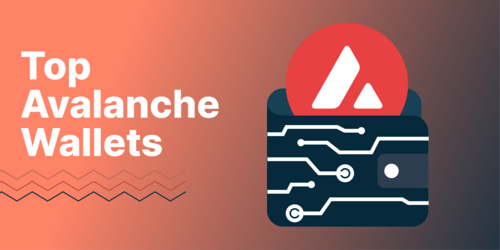
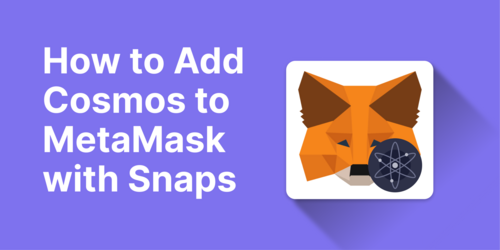




 Or check it out in the app stores
Or check it out in the app stores